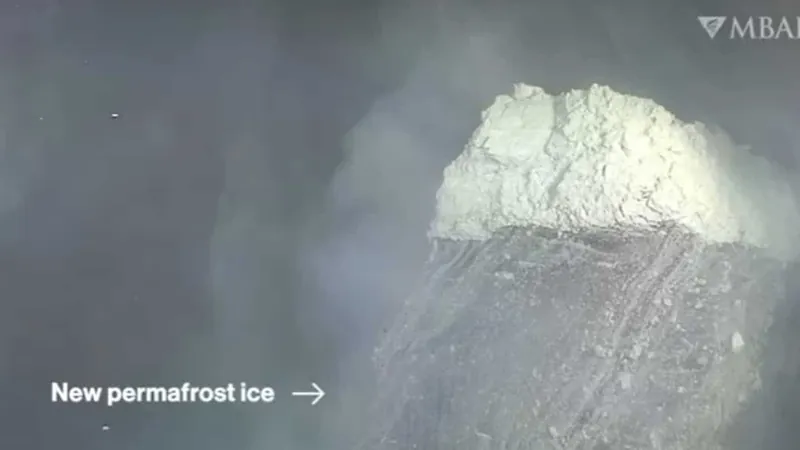
Scientists Uncover Mind-Blowing Underwater Structures Beneath the Arctic: Are They Signs of Alien Life?
2024-10-09
Author: Daniel
Scientists Uncover Mind-Blowing Underwater Structures Beneath the Arctic: Are They Signs of Alien Life?
In an astonishing revelation, scientists have discovered a series of mysterious underwater structures lurking on the seafloor of the remote Arctic region. This groundbreaking find has raised eyebrows and questions about what lies beneath the ice.
An international team of researchers, spearheaded by the Monterey Bay Aquarium Research Institute (MBARI), explored a range of formations that are larger than standard football fields, marking a significant scientific breakthrough. These so-called "modern" formations were located at the edge of the Canadian Beaufort Sea, a site previously known for its peculiar geological features.
Until now, scientists believed that a series of large craters filled with ice and sediment in this area were remnants of ancient permafrost formed at the tail end of the last Ice Age, which occurred nearly 11,000 years ago. Between 2010 and 2022, the researchers identified a staggering 65 newly formed craters, with the largest ones reminiscent of small city blocks and featuring geometric structures akin to six-storey buildings.
But what truly lies beneath this frosty facade? Utilizing advanced underwater robots, the researchers took samples from the newly formed craters. Their analyses revealed that the ice was generated under current-day conditions, contradicting previous theories. Notably, the ice formations are a result of ancient permafrost melting underwater, releasing brackish (slightly salty) groundwater that rises and then freezes again on the seafloor.
Remarkably, the temperatures in these submerged environments reached a chilling -1.4°C (29.5°F), allowing the groundwater to remain frozen until the cyclical melting and refreezing process resumes.
Lead author of the study, Charlie Paull, expressed his astonishment, stating, "These findings upheave our fundamental understanding of underwater permafrost. We once assumed all submarine permafrost was a remnant of the Ice Age, but our discoveries indicate that it is actively forming and decomposing in real-time along the modern seafloor."
Paull elaborated further, highlighting the implications of their work: "Our observations reveal a dynamic underwater landscape, marked by large sinkholes and substantial mounds of ice, insulated in sediment. This reshapes our understanding of the Arctic environment and the impact of climate change."
This startling discovery has not only enhanced our geological knowledge but has spurred speculation about the Arctic’s previously obscured ecosystems and potential life forms thriving in extreme conditions.
As scientists continue to explore the depths of the Arctic, the question remains: what other mysterious phenomena await discovery in the frozen depths of our planet? Stay tuned, as the adventure beneath the ice unfurls!

 Brasil (PT)
Brasil (PT)
 Canada (EN)
Canada (EN)
 Chile (ES)
Chile (ES)
 España (ES)
España (ES)
 France (FR)
France (FR)
 Hong Kong (EN)
Hong Kong (EN)
 Italia (IT)
Italia (IT)
 日本 (JA)
日本 (JA)
 Magyarország (HU)
Magyarország (HU)
 Norge (NO)
Norge (NO)
 Polska (PL)
Polska (PL)
 Schweiz (DE)
Schweiz (DE)
 Singapore (EN)
Singapore (EN)
 Sverige (SV)
Sverige (SV)
 Suomi (FI)
Suomi (FI)
 Türkiye (TR)
Türkiye (TR)